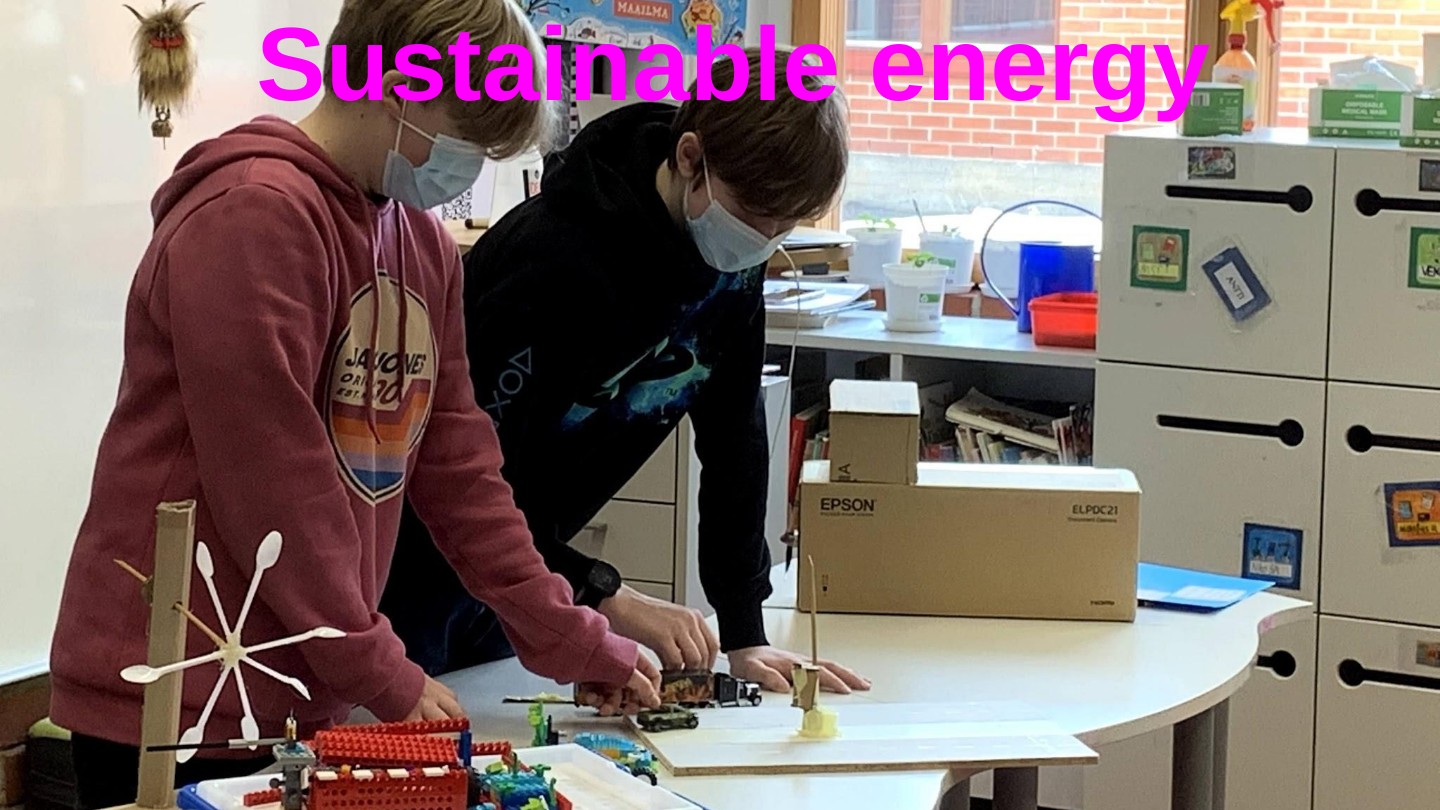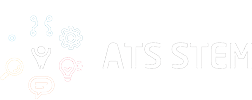
10 Feb Renewable and sustainable energy project learning cycles
Introduction
My name is Vuokko Kangas, and I have been involved in guiding teachers to organize interdisciplinary learning modules according to the ATS-STEM model, and have acted as a teacher mentor as well. In the Spring of 2021, we carried out a couple of ATS STEM learning cycle projects ourselves in Oulu Teacher Training School, one of which I will present here.
When I am asked about my involvement in the ATS-STEM-Erasmus + project, I am, of course, asked to clarify: What exactly is it? It can be difficult to describe briefly because it is a rather versatile and comprehensive project.
The aim of the ATS STEM project is to research, develop and test the assessment of transversal skills in interdisciplinary learning entities. We want to work together to find and develop digital tools for this formative assessment.
The theme for the learning cycles is sustainable development, but the focus can be on one or more different sustainable development goals. At the heart of the interdisciplinary learning entities are STEM (science, technology, engineering, mathematics) subjects. The ATS STEM research project is part of the Erasmus + program, which provides information to support policy guidance. The participating countries are Finland, Sweden, Ireland, Cyprus, Spain, Slovenia, Austria and Belgium. Finland is represented in this project by the TRIM Research Center at the University of Tampere.
Starting points for Renewable and sustainable energy project learning cycles
We had 46 students, in 6th Grade (12-13 years old) from Oulu Teacher Training School involved in this project. There were two supervising teachers, but eight trainee teachers were responsible for teaching the project lessons.

The targeted skills that were formatively, digitally assessed during the project were problem-solving, creativity, and innovation, and the primary digital tools used for formative assessment of targeted skills were Qridi and Google classroom.
The planning started with the order and schedule of the project, so that the topics of the project fit into the curricula of both the classes and the teaching trainees. To illustrate, the timetable for the lessons for the renewable energy learning cycle is shown below. Several hours were also set aside for the guidance of the students before the start of the STEM project.

Learning cycle 1: Renewable energy
Students researched different ways to produce energy. Each group had their own renewable energy form. They imagined they were representatives of an energy company who had to defend their own type of energy at a city council meeting. Together, students and teachers voted on which form of energy was the most ecological.




1. Defining a real world problem related to SDGs
Teachers provided a general introduction to the subject, and explained the project. Students completed an initial survey regarding what they already know about energy. The topic relates to SDG 7: Affordable and Clean Energy and SDG 13: Climate Action. Students co-designed learning goals and defined success criteria. Students completed self-assessments in Qridi.

2. Finding solution(s)
Students planned group projects together by designing research questions, deciding on division of labour, and conducting an initial search for information. Students began to explore their topics: where to get energy, how much of it is available, which are renewable and non-renewable sources, where energy is used, and related statistics. Students researched information from different sources independently and took notes. Students completed another round of formative assessment in Qridi. At home, students conducted interviews with their parents about energy sources in the home.
3. Trialing solution(s)
Students each composed their own essay, about their own chosen form of energy, imagining a situation in which the use of this energy source would be completely eliminated or would be the only form of energy remaining and exploring the different alternatives. The essays had to address what are the advantages and disadvantages of the energy source. At the end of the lesson, students completed another round of self-assessment in Qridi.
4. Assessing solution(s)
Students introduced their own essays to their own small group. Based on the group’s essays, students designed the best arguments for defending their own form of energy and how to address possible challenges. These essays were evaluated using the rubric tool in Google-Classroom, specifically considering creativity and problem-solving skills.
5. Discussing solution(s)
Groups presented their models to the other groups .A group discussion was conducted, focused on a four-fields or SWOT analysis to draw a common conclusion. Then, students completed a final round of formative assessment in Qridi.

Reflection
After the first renewable energy learning cycle, the successes and evaluation of the first round were discussed, and we considered how the evaluation could be improved.
Learning cycle 2: Sustainable energy solutions
The following learning cycle was to build an operational scale model of a sustainable energy solution or device that produces or saves energy for transport or heating.

1. Defining a real world problem related to SDGs
Introduction to the topic: Students first watched a video of the Tippy-tap, a simple invention for providing enough handwashing water when water is limited. Now it was the students’ turn to come up with something new that would be a sustainable energy solution. How to make cities more energy-friendly? The objectives of the second learning cycle were defined together. The teacher asked: What kind of energy solutions would you want to develop? Unleash your creativity! The learning cycle was most directly connected to SDG 7: Affordable and Clean Energy, SDG 9: Industry, Innovation and Infrastructure, and SDG 13: Climate Action.




2. Finding solution(s) and 3. Trialing solution(s)
Students built scale models or designed posters of a sustainable energy solution for transport and heating. Across three lessons the students built and trialed the inventions which somehow meaningfully solved an energy problem. The class produced a variety of solutions involving various components, such as hydrogen cells, solar panels, wind power generators, and using micro-bits, LEGOs and other tools from high school, and students also brought supplies from home. Students completed formative assessment at the end of the third lesson.
4. Assessing solution(s) and 5. Discussing solution(s)
Students presented their ideas and structures to others. A group discussion was held on each idea and group feedback was given on different issues compared to, and based on, the set learning goals, both orally and digitally. Co-designing the learning goals and defined success criteria helped students to maintain focus on what was being assessed. Students completed formative assessment at the end of the lesson.
5. Discussing solution(s)
Finally, the whole project was evaluated and a learning diary was written about it in Qridi. The groups also made one slide in English from each stage of the project and those slides are included in this presentation.
At the same time, we were involved in the Erasmus+ project SDGś Action! and students were able to present our project and their own output to the international audience next week. This is how they got feedback and visibility for their own work. Knowledge of these upcoming performances will motivate students to work. The presentations were compiled for the project’s Twinspace and Genial.ly platforms.
Student self-assessment of ATS STEM competencies as project evaluation
The students’ self-assessment of their broad-based transversal competencies improved during the implementation of these learning cycles. As part of the ATS STEM project, students were asked to self-assess their competence in each of the eight ATS STEM competencies from 1 (very poor) to 5 (excellent) before and after the project. As shown in the figure below, the average self-assessment by students for each of the eight ATS STEM transversal skills increased after having participated in the ATS STEM project learning cycles (red line) compared with before the beginning of the project (blue line). This data was collected by our Spanish partners, and this visualizion of the results has been provided by them.



